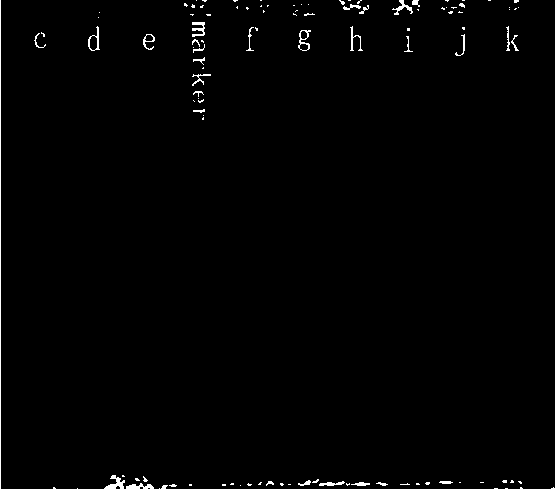Method for purifying silk fibroin
A silk fibroin and purification method technology, applied in the field of biomaterials, can solve the problems of long time, weak degumming ability, high price, etc., and achieve the effect of improving performance and maintaining molecular weight
- Summary
- Abstract
- Description
- Claims
- Application Information
AI Technical Summary
Problems solved by technology
Method used
Image
Examples
Embodiment 1
[0017] Take 40 grams of silkworm silk, soak it in 5% fatty alcohol polyoxyethylene ether at 40°C for 30 minutes, the bath ratio is 1:10, and then boil it with 0.01% sodium bicarbonate aqueous solution, the bath ratio is 1:50 , time 30min, repeat the above steps twice, after rinsing with deionized water, put it in a 60°C oven for drying, the dried silk is in phosphoric acid with a bath ratio of 1:10, a papain concentration of 3g / L, and a temperature of 65°C. Soak in disodium hydrogen-citric acid buffer solution (pH = 6) for 60 minutes to degumming, wash with deionized water, and dry in an oven at 60°C. The dried degummed silk is dissolved in a 9.3M lithium bromide solution, and dialyzed with deionized water for 3 to 4 days to obtain a pure silk fibroin solution.
Embodiment 2
[0019] Take 40 grams of silkworm cocoons, soak them in 2% fatty alcohol polyoxyethylene ether at 40°C for 30 minutes, with a bath ratio of 1:20, and then boil them with 0.5% aqueous sodium bicarbonate solution with a bath ratio of 1:50. After 30 minutes, rinse with deionized water and dry in a 60°C oven. The dried silk is buffered with disodium hydrogen phosphate-citric acid at a bath ratio of 1:10, a papain concentration of 5g / L, and a temperature of 60°C. Soak in solution (pH=6) for 60 minutes to degumming, wash with deionized water, and then dry in an oven at 60°C. The dried degummed silk is dissolved in a 9.3M lithium bromide solution, and dialyzed with deionized water for 3 to 4 days to obtain a pure silk fibroin solution.
Embodiment 3
[0021] Take 40 grams of silkworm cocoons, soak them in sodium salt of 5% glyceryl monostearate sulfate at 60°C for 30 minutes, with a bath ratio of 1:50, and then boil them with 0.01% aqueous sodium bicarbonate solution with a bath ratio of 1 :50, time 30min, repeat the above steps twice, rinse with deionized water, dry in a 60°C oven, dry silk at a bath ratio of 1:10, trypsin concentration 10g / L, temperature 37°C Soak in PBS buffer (pH = 8) for 60 min to degumming, wash with deionized water, and dry in an oven at 60°C. The dried degummed silk is dissolved in a 9.3M lithium bromide solution, and dialyzed with deionized water for 3 to 4 days to obtain a pure silk fibroin solution.
PUM
 Login to View More
Login to View More Abstract
Description
Claims
Application Information
 Login to View More
Login to View More - R&D
- Intellectual Property
- Life Sciences
- Materials
- Tech Scout
- Unparalleled Data Quality
- Higher Quality Content
- 60% Fewer Hallucinations
Browse by: Latest US Patents, China's latest patents, Technical Efficacy Thesaurus, Application Domain, Technology Topic, Popular Technical Reports.
© 2025 PatSnap. All rights reserved.Legal|Privacy policy|Modern Slavery Act Transparency Statement|Sitemap|About US| Contact US: help@patsnap.com


